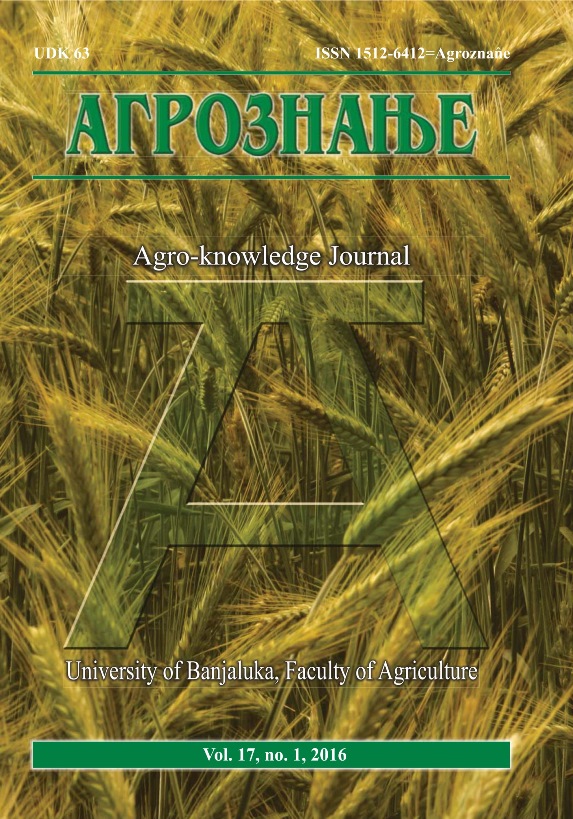Green Forage Yield and Yield Components of Five Oilseed Rape Genotypes (Brassica napus L.) in Response to Sowing Date and Harvest Stage
DOI:
https://doi.org/10.7251/AGREN1601059PAbstract
Five oilseed rape genotypes were tested at three sowing dates and harvested at two developmental phases to determine their effects on green forage yield and yield components during 2013/14 growing season. The highest density of canopy was observed at the third sowing date (86 - 157 plants/m2). Among five genotypes, AbaKus formed the most plants/m2 - 109, 106 and 157. The highest plant height was observed from the first sowing date (94.7 - 104 cm). The examined genotypes formed most leaves/plant, from 8.1 to 9.9 planted at the first sowing date. The cultivar AbaKus expressed a significantly higher forage yield (61.2 t/ha) during the second harvest phase. Together with cv. Perko, they had the greatest green forage production potential.

